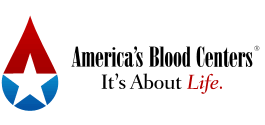Tomorrow’s Donor Base
What will our donor base need to look like to meet the transfusion needs of tomorrow? This is perhaps an odd question to ask when the past five years have been characterized by unprecedented declines in blood use and a struggle to take out capacity and reduce costs. Answering this question can also be easily postponed in favor of identifying solutions to near-term problems like chikungunya virus, or resolving long-term issues, such as our inability to convert concurrent plasma for fractionation. But it will require an answer nonetheless, and I believe it will constitute a major challenge for us all.
Our collective response to the utilization decline and mounting cost pressures has been reasonable; one tactic has been to eliminate smaller, less efficient mobile operations. But in this approach, we also may have reduced our primary source for new donors and over a five-year period, have likely experienced an overall reduction in our active donor base commensurate with demand. A closer look at the makeup of our current blood use suggests the decline in usage has not been consistent by type - our proportionate need for O-negative whole blood donors and AB plasma donors is higher today than at our peak usage in 2008.
We have all speculated about when we will "hit the bottom." How much more will total blood use drop? Although we do not know when usage will level out or at what point we will see stability in demand, I think we can expect it to occur in the next few years. Then what? Arguably the increased proportionate demand for specific blood types will require us to cultivate and sustain donor relationships in new ways with a diminished donor base. But then let's complicate matters further. Demographic shifts already underway point toward impending gaps in our donor base. Questions surrounding hemoglobin deferrals, increasing demand for group-specific platelets, and the future impact of personalized medicine will exacerbate the problem. Will future expectations go beyond providing antibody-compatible components to providing antigen-matched products?
Although we can only speculate as to how significant these factors will be in our quest to deliver optimum transfusion support for patients in need, I believe it is imperative for us to have crucial conversations now about these issues and ensure our donor relationship management practices are prepared for whatever the future may hold. ABC is uniquely positioned to help us have those conversations and work together to prepare solutions.
Dave Green, Board President; [email protected]
Posted: 09/05/2014 | By: Dave Green, Board President | Permalink
< Back to list






